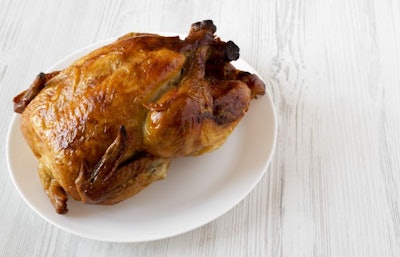
Cherkizovo Group, Russia’s largest meat and poultry producer, took part in a meeting of executives from Russian meat processing companies. Andrey Dalnov, the company's chief analyst, spoke about global factors that are most likely to affect Russian meat producers in the coming years.
Dalnov spoke at the 6th All-Russian Convention of Owners and Executives of Meat Processing Enterprises, which was held October 10 as part of Agroprodmash 2019, an exhibition hosted by Expocenter.
Per capita meat consumption increase expected
The global environment in the next ten years is going to be favorable for all meat producers, Dalnov said, citing outlooks by the Organisation for Economic Co-operation and Development (OECD) and Food and Agriculture Organization of the United Nations (FAO). By 2028, per capita meat consumption is expected to increase from 34.7 kilograms to 35.1 kilograms, with the world’s population going up from 7.4 billion to 8.1 billion over the same period.
“Thanks to their affordability, poultry and pork will continue to dominate the meat market. In contrast to pork, poultry will further improve its position as the cheapest type of staple meat which is also easy to cook,” said Dalnov. “In ten years from now, per capita poultry consumption will likely rise by 5% to 14.8 kilograms, while the same figure for pork is forecast to decline by 3% to 12 kilograms. All this will see China as the key driver of global meat production: By 2028, the country will add some 9 metric tons (mt) to its annual output, coming ahead of the U.S. and Brazil (nearly 6 mt and slightly under 4 mt, respectively).”
Russian exports to China
China is already one of the most attractive external markets for Russian meat producers. Thus far, poultry has been Russia’s only export to this country, with chicken feet (approximately 80% of total poultry exports to China) and wings representing the bulk of supplies.
But Dalnov expects the Chinese pork market to open to Russian producers very soon as the gap between pork prices in the two countries keeps widening, reaching a record high of US$2.70 per kilogram in September. “The wider this gap is, the more likely China is to soften its stance and allow Russian pork into its market,” he said.
















